You know what drives me absolutely bonkers? Can we just talk about this for a second? It’s this idea that to make a small living room feel bigger, you have to buy a bunch of tiny furniture and shove it all up against the walls like it’s in a time-out. It’s the number one mistake I see, and it breaks my heart because it does the exact opposite of what you want. It creates a sad little furniture line-up and a big, useless space in the middle—a “dance floor for dust bunnies,” as one of my clients called it.
The real secret isn’t about shrinking everything down. It’s about being clever. It’s about tricking the eye, choosing pieces that work harder, and creating a feeling of flow and intention. Your living room, no matter its size, should feel like a warm hug when you walk in. It’s where you curl up after a long day, where the kids build forts, and where you connect. Let’s forget the old, stuffy rules and talk about what actually works to make your small space feel generous, comfortable, and oh-so-cozy.
Strategic Foundations: Planning Your Small Space Transformation
Before we even think about a paint chip or a throw pillow, we need a game plan. I know, I know—it’s the least glamorous part, but I promise you, getting this right saves so much heartache later. This is about understanding your room not just as a box, but as the future heart of your home. Think of it as laying the foundation for all the good, cozy memories to come.
1. Conduct a Precise Room Measurement Audit for Accurate Planning
The first thing we absolutely have to do is measure everything. And I don’t just mean the length and width of the room. I mean everything. The height of the ceiling, the distance from the corner to the window, the exact size of the doorway, where the outlets are—all of it. It feels tedious, I get it, but it’s the only way to avoid that gut-wrenching moment when the delivery guys show up with a sofa that won’t fit through the door. I once had a client who “eyeballed it” and ended up having to sell a brand-new, custom sofa at a huge loss because it was two inches too wide for the only logical wall.

So, grab a tape measure and maybe even a simple laser measure if you want to feel fancy. Sketch out a little map of your room on a piece of paper. Then, take some painter’s tape and mark out the dimensions of the furniture you’re considering right on the floor. This is my favorite trick because it helps you feel the space. You can literally walk around the “sofa” and see if you’ll be stubbing your toe every time you cross the room.
And that little bit of prep work naturally leads us to thinking about how you’ll move through the room.
2. Define Key Functions to Optimize Space Utilization Immediately
Okay, now that we know the “where,” let’s talk about the “what.” What do you actually do in this room? Is this where the family piles up for movie night? Is it your quiet corner for reading after the kids are in bed? Do you need a little spot to answer emails? Be honest, because a small living room can’t be everything to everyone. The goal is to make it brilliant at two or three key things. I call this a “lifestyle audit.”
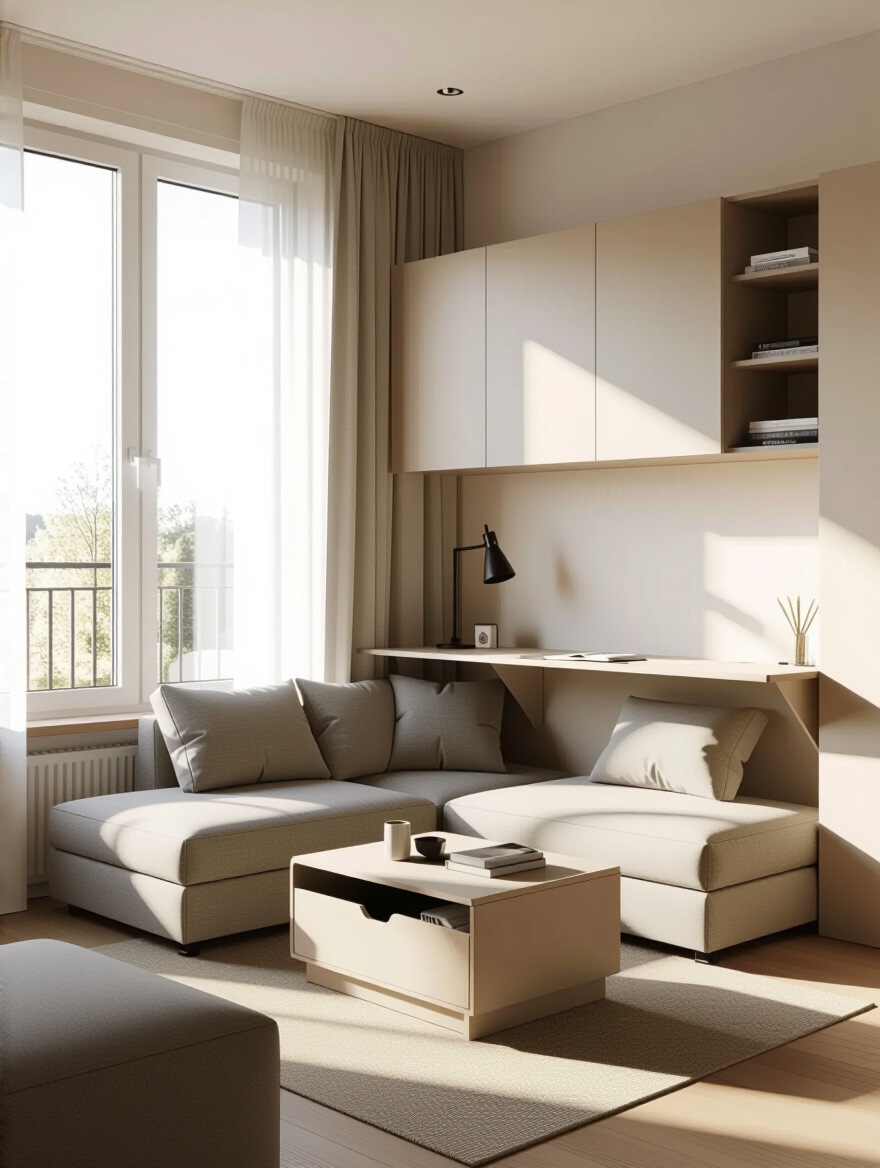
I remember working with a young family whose living room was pure chaos. It was trying to be a playroom, a home office, and a formal entertaining space all at once. It was failing at all three. We sat down and decided its most important jobs were family movie nights and a comfy spot for them to unwind. That’s it. This clarity was freeing! Suddenly, we knew we needed a deep, comfy sofa (not a stiff, formal one) and clever, Hidden Storage for toys, and we could ditch the idea of a desk.
This simple act of prioritizing will guide every single choice you make from here on out.
3. Establish a Clear Color Palette to Enhance Perceived Openness
Now for the fun part: color. The biggest myth out there is that a small room must be painted stark white. White is great, but it’s not your only option! What’s more important is creating a cohesive feel. You want to pick a light, gentle color for the walls and then layer in a few other tones that are in the same family. Think soft blues, gentle grays, warm beiges, or even a muted green. This creates a soft, blended look that blurs the edges of the room, making it feel more expansive.
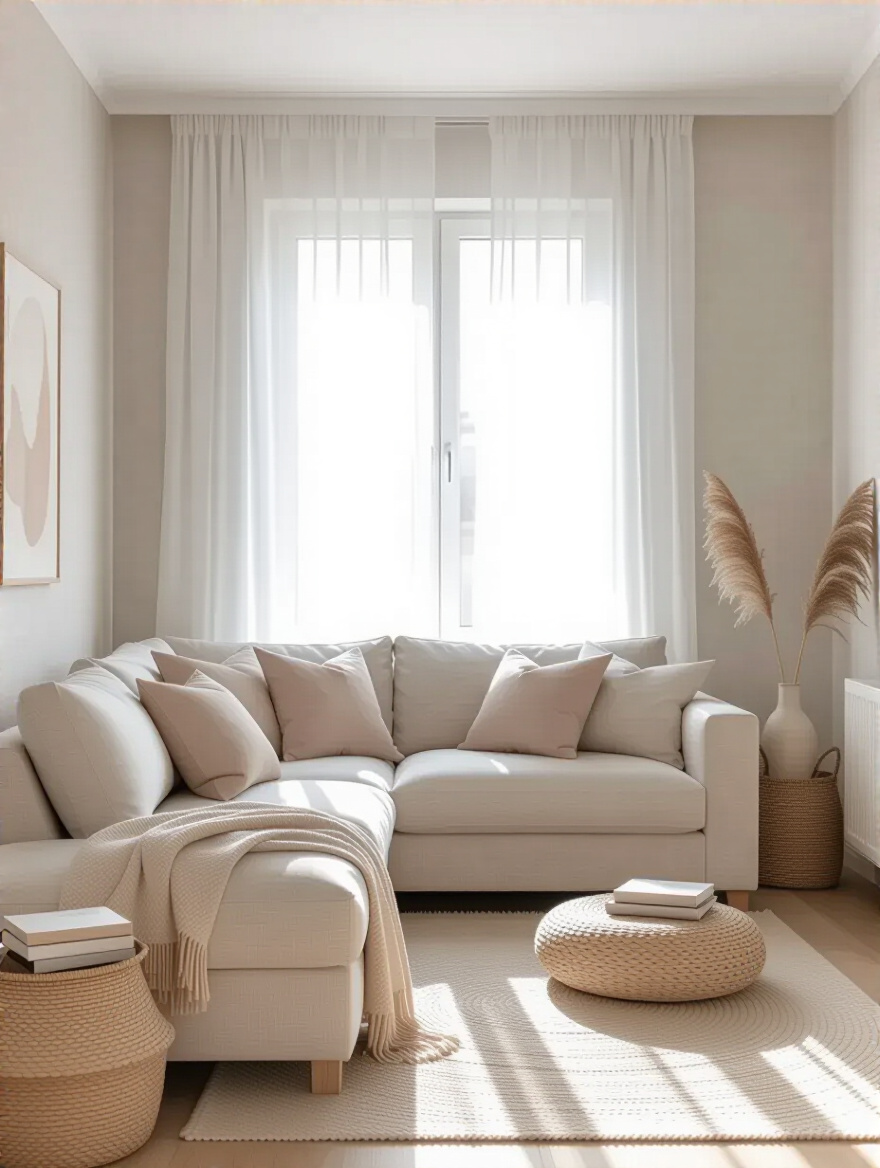
The idea is to avoid jarring contrasts that chop up the space. I once worked on a narrow room that the owners had painted with a dark “accent wall.” It felt like the wall was literally lunging at you. We repainted the whole room a single, beautiful light greige—walls, trim, everything. The transformation was instant. The room felt calmer, bigger, and so much more sophisticated. My trick is to use the 60-30-10 rule: 60% of your room is your main wall color, 30% is a secondary color (like your sofa or rug), and 10% is your little pops of personality from pillows or art.
And keeping that sense of calm is all about making sure the room is easy to navigate.
4. Map Traffic Flow Paths for Unimpeded Movement
This sounds technical, but it’s really just about being able to walk through your living room without bumping into things. We need to create clear pathways. Think about the journey from the doorway to the sofa, or from the sofa to the window. You want those paths to be open and easy. The common wisdom says to push furniture against the walls to create more space, but that’s often what creates the problem—you end up with a cluttered obstacle course around the edges.

A room where you can move freely feels infinitely larger than a room with more square footage that’s difficult to walk through. It’s all about how the space feels.
Take that floor plan you sketched out and draw the main “roads” people will travel. A main walkway should be about 36 inches wide—enough for someone to walk by comfortably. The space between your sofa and your coffee table should be about 18 inches. By intentionally leaving these paths clear, you make the whole room feel more gracious and functional, which is the secret to making a small space feel luxurious.
Now that we have our solid plan, let’s talk about the fun stuff—the furniture.
Smart Furnishings & Layouts: Maximizing Function & Flow
This is where the magic really starts to happen. Choosing furniture for a small room isn’t about deprivation; it’s about being a brilliant curator. Every piece you bring in should be beautiful, comfortable, and, ideally, a bit of a secret genius.
5. Opt for Legged Furniture to Create an Airy, Open Feel
This is one of my all-time favorite, easiest tricks. Whenever you can, choose furniture that has legs you can see! Sofas, armchairs, consoles, side tables—when you lift the furniture off the floor, you allow your eye to see the flooring continue underneath it. This little bit of airiness makes a massive difference. Heavy, skirted furniture that goes all the way to the ground can look like a solid block, visually stopping your gaze and making the room feel heavier and smaller.
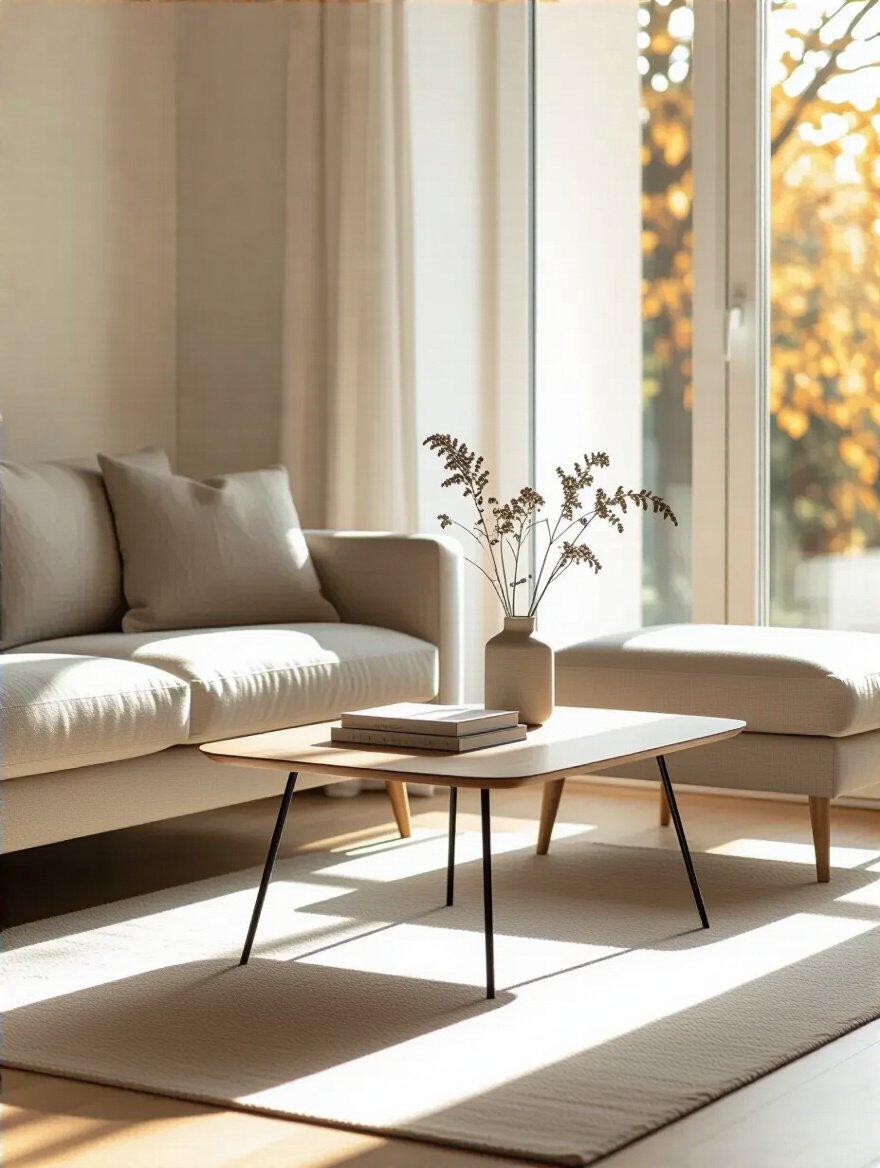
I had a client with a beautiful but small living room that felt so weighed down. The only thing we changed was swapping her blocky, skirted sofa for a nearly identical one with slim, 6-inch legs. It was like the room took a deep breath. Suddenly, light could move around more freely, and the entire space felt lighter and more open. Just remember to resist the urge to store a bunch of stuff under there—that totally defeats the purpose!
Lifting things up is a great start, and so is making sure your furniture pulls its own weight.
6. Embrace Multi-Functional Pieces for Enhanced Utility
In a small space, every piece of furniture has to earn its keep. This is where you get to be really clever. Think of your furniture like members of a team—everyone needs to have more than one skill. An ottoman isn’t just a footrest; it’s a coffee table (with a tray on top) and secret storage for blankets and remotes. A console table can also be a mini-desk. And of course, the classic sleeper sofa is a lifesaver for guests.
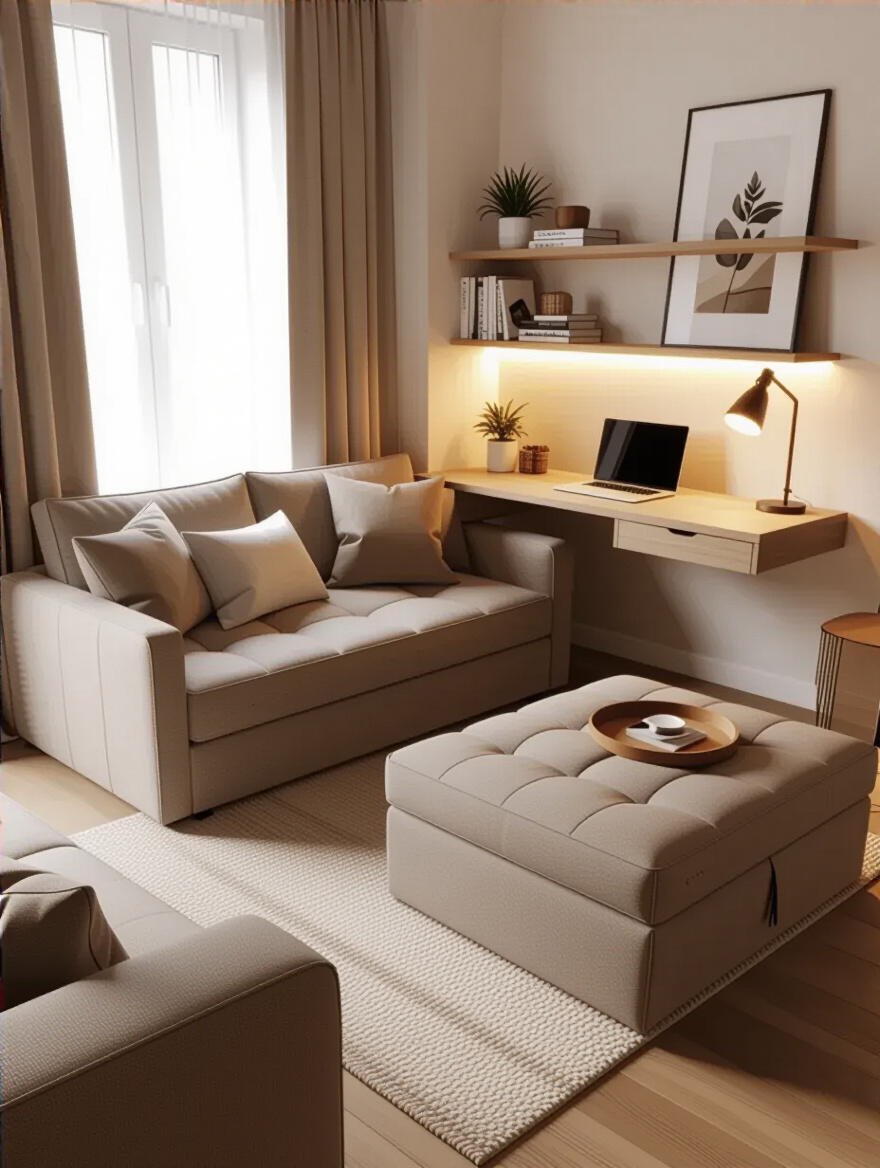
My first apartment was laughably tiny, and my prized possession was a big, square storage ottoman. It was my coffee table, extra seating when friends came over, and it held all my board games and extra linens. It was the hardest-working piece in the room! When you choose pieces that serve two or even three functions, you eliminate the need for other furniture, freeing up precious floor space and making your room feel so much calmer and less cluttered.
Finding a smart piece is one thing; making sure it’s the right size is the next crucial step.
7. Select Appropriately Scaled Seating to Avoid Overcrowding
This one can be tricky. People often think a small room needs a tiny sofa, but that’s not always true. What it needs is an appropriately sized sofa. The biggest culprits of overcrowding are sofas with massive, puffy arms and super-deep seats. You can often find a sofa that offers just as much seating room but has slim, modern arms, which can save you a whole foot of space! It’s about proportion, not just size.
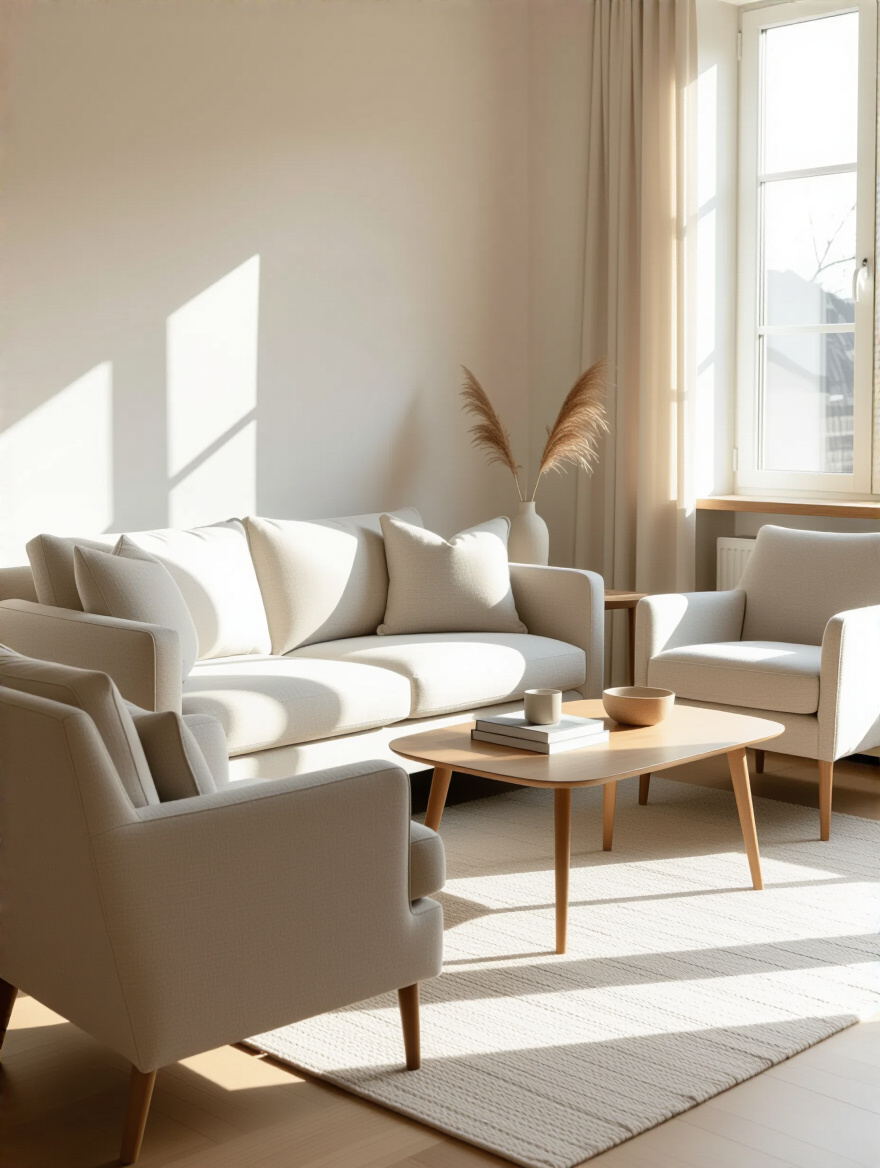
Before you go shopping, use your painter’s tape on the floor again to mark out the absolute maximum size a sofa or chair can be while still leaving you enough room to walk around it. Take those measurements with you, and stick to them! Don’t be seduced by a giant, squishy sectional in the showroom that would eat your entire room. Sometimes a “small scale” sectional or a sofa with a chaise is a great option because it can feel more generous and welcoming than a separate sofa and chair.
And once you have the right piece, don’t be afraid to pull it away from the wall.
8. Float Furniture Away from Walls to Widen Visual Space
I know this sounds completely backward, but trust me on this. Pulling your sofa even just a few inches off the wall creates breathing room. It makes the space behind the sofa visible, which tricks your eye into seeing the room as deeper and more layered. Pushing everything flush against the perimeter is what creates that sad, boxy feeling we want to avoid. Floating your furniture helps you create intentional, cozy conversation areas.

Start by anchoring your main seating area with a rug. A good rule of thumb is to have at least the front two legs of your sofa and any chairs on the rug. This defines the zone and makes it feel like a cohesive, purposeful space. Then, pull the pieces a bit closer together. You’ll be amazed at how this simple shift can make your living room feel more intimate, inviting, and, paradoxically, more spacious.
You can also use the new space behind the sofa for a super slim console table with a lamp, adding another layer of light and function.
9. Prioritize Vertical Furniture Elements to Draw Eyes Upward
When you can’t go wide, go tall! Drawing the eye upward is a classic designer trick to make a room with low or standard ceilings feel grander. Think tall, narrow bookcases that go almost to the ceiling, floor-to-ceiling curtains, or even a tall, slender floor lamp. These vertical lines create an illusion of height and make the whole room feel more open and airy.
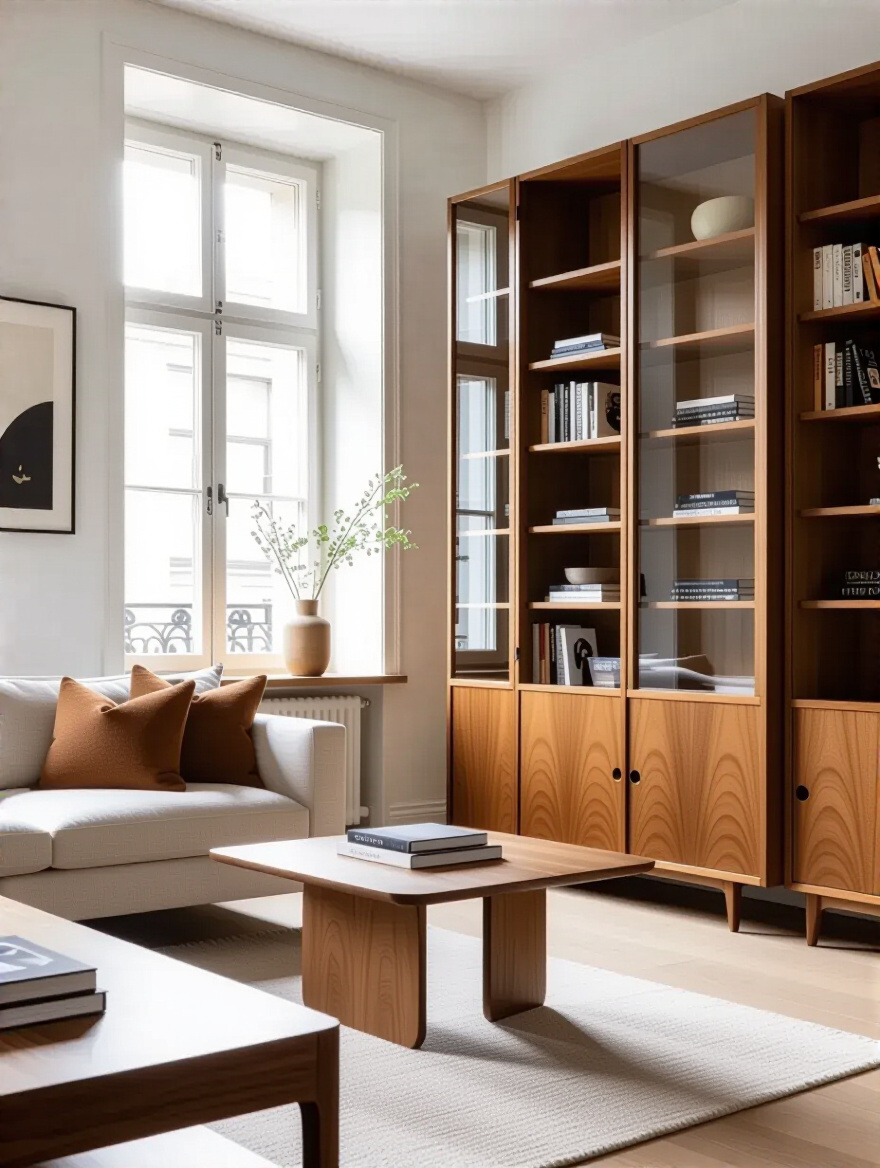
I once worked in a small apartment where we replaced a low, wide media unit with a tall, modular wall system. It provided so much more storage for their books and electronics, but because it drew the eye up, the entire wall felt taller and the room less cramped. The goal is to get people to look up, which distracts from the limited floor space and emphasizes the room’s volume.
Another way to create visual interest is by breaking up the boxy grid.
10. Angle Key Pieces for Dynamic Layouts and Conversation Nooks
Living rooms don’t always have to be arranged in perfect right angles. Sometimes, the most interesting and functional layout comes from placing a key piece of furniture, like an armchair, on a slight angle. This can soften a boxy room, improve traffic flow, and create a really sweet and inviting little corner for reading or conversation. It breaks up the monotony and makes the layout feel more dynamic and thoughtful.
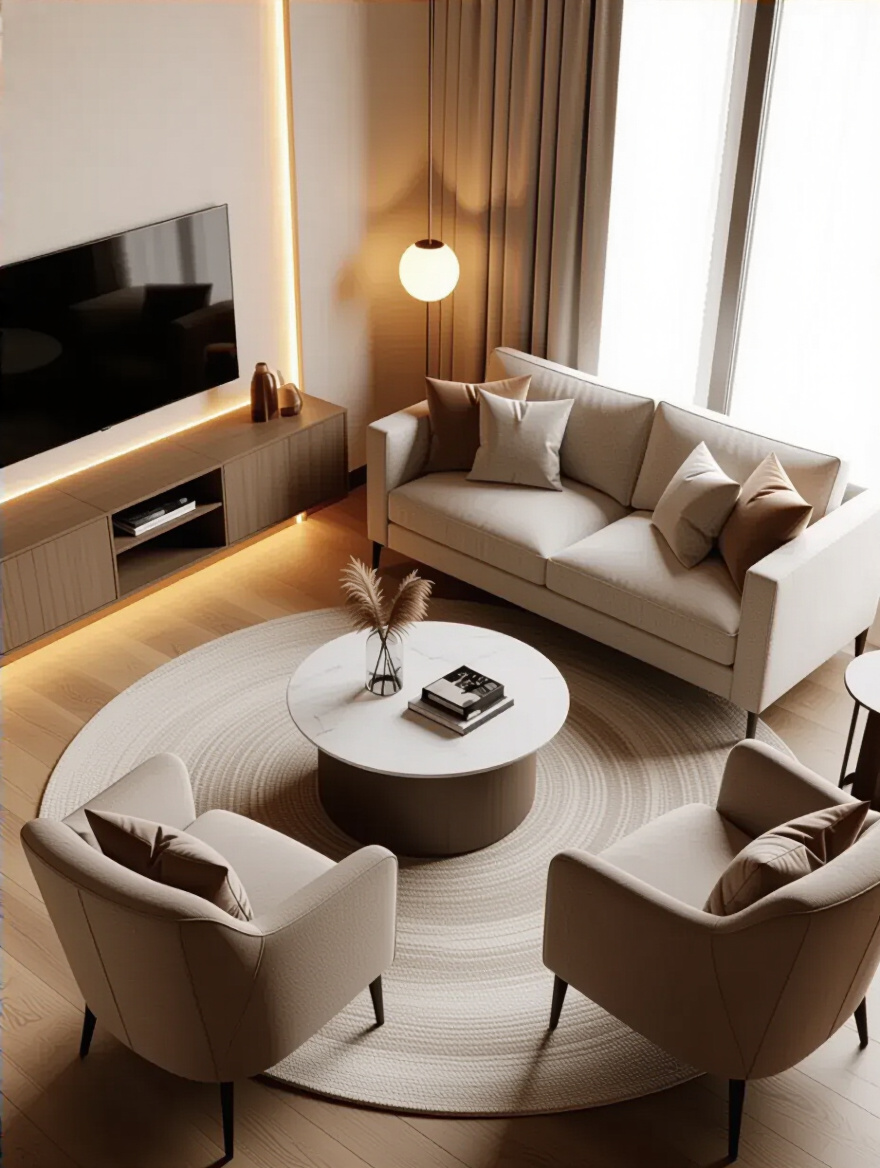
In a long, narrow living room I designed, we placed two comfy armchairs on an angle facing each other in one corner, with a small table between them. It instantly created a “zone” that felt separate from the main TV-watching area. Before, that corner was just wasted space. Afterward, it became the homeowners’ favorite spot for morning coffee. Just make sure your angled pieces don’t block a major walkway!
Now let’s move on to the sneaky tricks of the trade—using light and color.
Optical Illusions: Light & Color Mastery for Expansive Spaces
This is where we get to be real magicians. So much of what makes a room feel spacious has nothing to do with its actual size and everything to do with perception. With a few clever tricks using light, color, and reflections, we can make your living room feel double its size.
11. Paint Walls in Light, Cool Hues for Immediate Spaciousness
Color psychology is real, and it’s one of your most powerful tools. Light colors literally reflect more light, which instantly makes any room feel brighter and more open. Cool colors—like soft blues, greens, and grays—have the added bonus of visually receding, meaning they make the walls feel further away than they actually are. It’s an amazing optical illusion that costs no more than a can of paint.

Think about the feeling you want to create. Soft blues and greens are incredibly calming and serene, perfect for a retreat-like space. A pale, gentle gray can feel wonderfully sophisticated and modern. Just make sure you test the color first! Paint a big swatch on a couple of different walls and see how it looks in the morning light versus the evening lamplight. A color can change dramatically throughout the day.
And speaking of light, let’s make sure we’re getting as much of it as possible.
12. Maximize Natural Light Access by Minimizing Window Obstructions
Natural light is the best accessory any room can have, and it’s free! Your number one job is to let as much of it in as you can. This means no heavy, dark curtains that block the edges of the window frame. Instead, opt for lightweight, airy fabrics like linen or sheers. And here’s the real pro move: hang your curtain rod 4-6 inches higher and 6-12 inches wider than the actual window frame.
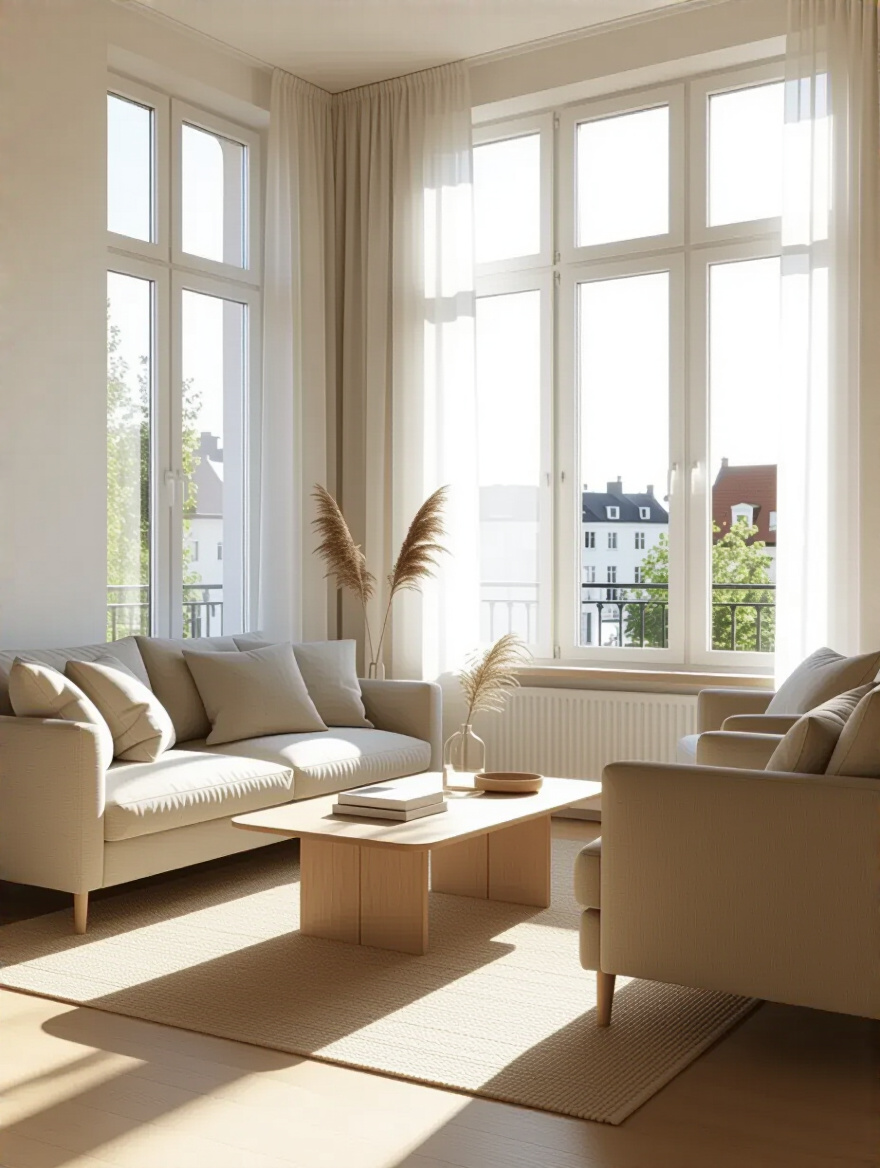
This trick does two things: hanging the rod higher makes the ceiling feel taller, and extending it wider allows you to pull the curtains completely clear of the glass when they’re open. This way, you’re not blocking a single precious inch of that beautiful daylight. Also, keep your windowsills clear! A cluttered sill can make the whole area feel cramped and dark. Let the sunshine in!
Another way to multiply that light is with a bit of reflective magic.
13. Incorporate Strategically Placed Mirrors to Double Visual Depth
Mirrors are the oldest trick in the book for a reason: they work! A large mirror can quite literally double the feeling of space in your room. The key is strategic placement. The best spot is usually across from a window, where it can capture all that natural light and the view from outside, bouncing it all back into the room. It’s like adding a whole other window.
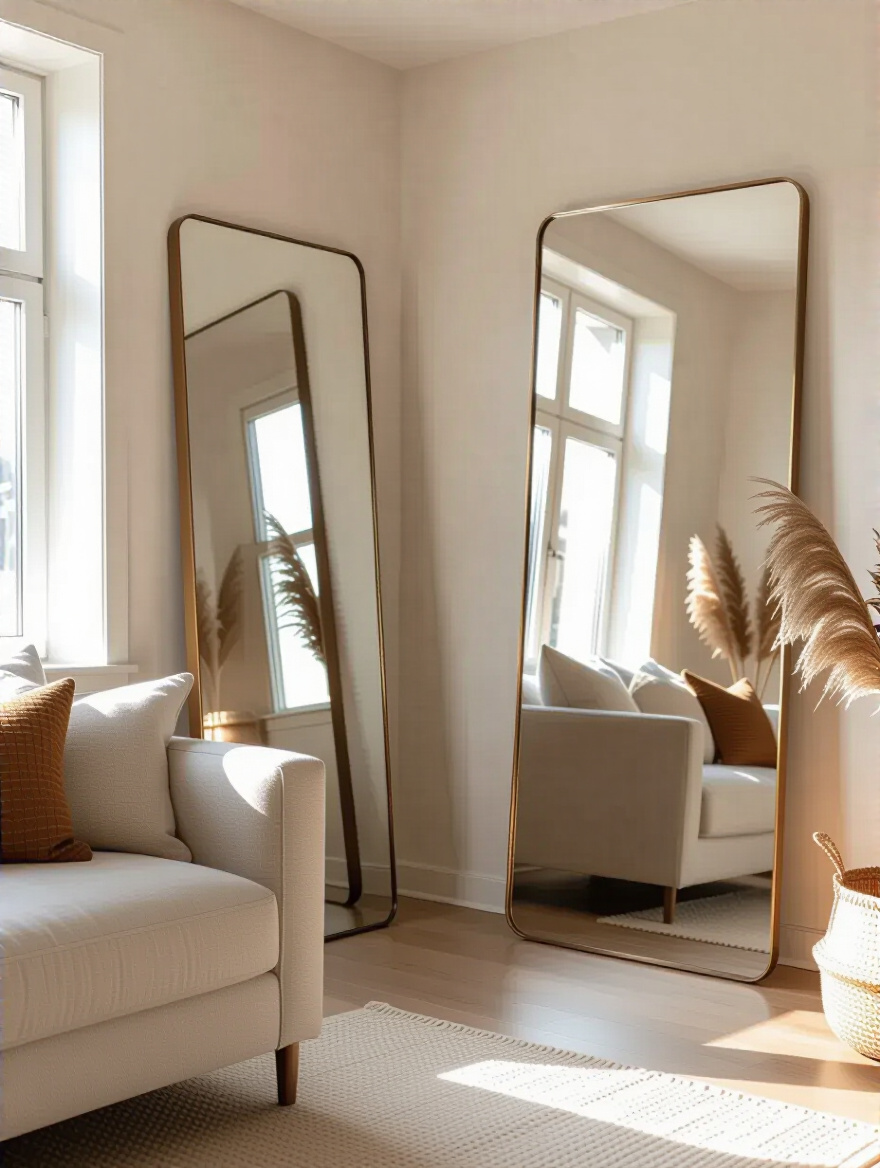
Don’t be afraid to go big. A collection of small mirrors can look just as cluttered as a gallery wall of small art. One large, statement mirror will have a much more powerful and sophisticated effect. You can also use a tall, full-length mirror leaned against a wall to create the illusion of a higher ceiling. It’s a simple, elegant solution that adds depth, light, and a touch of glamour.
This leads us right into thinking about our other sources of light.
14. Utilize Recessed or Wall-Mounted Lighting to Free Up Floor Space
In a small room, floor space is gold. So why would we want to give any of it up to a bulky floor lamp? Whenever possible, look for ways to get your lighting off the floor and surfaces. Recessed lighting (like pot lights) is fantastic for overall ambient light because it completely disappears into the ceiling. Wall-mounted sconces are another one of my favorites, especially flanking a sofa or a piece of art.
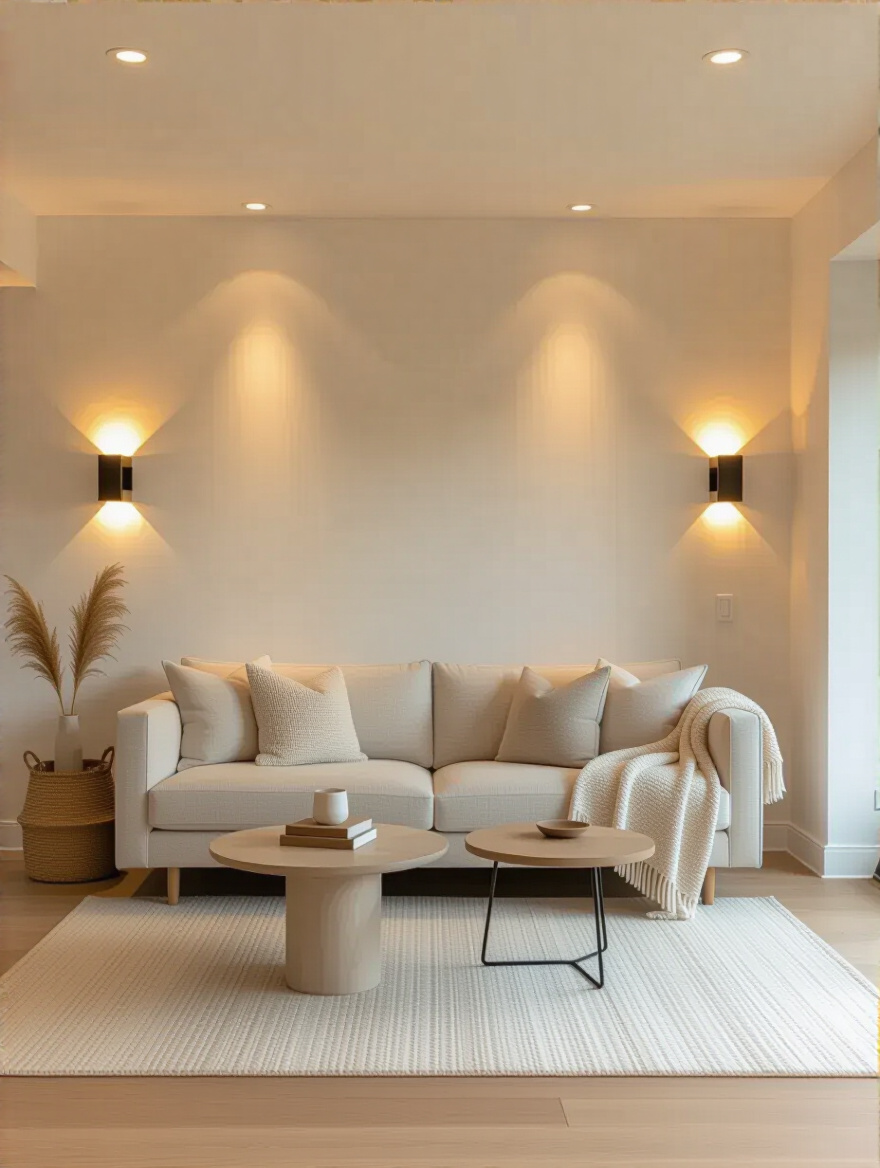
They provide beautiful, layered light without taking up a single inch of table or floor space. This not only makes the room feel larger but also instantly less cluttered because you don’t have cords snaking around. Putting all your lights on dimmer switches is a non-negotiable for me. It allows you to transform the mood of the room from bright and functional to soft and cozy with the touch of a button.
The lighting and wall color should work together seamlessly, which brings us to our next point.
15. Employ Monochromatic or Tonal Color Schemes for Seamless Flow
This is a more advanced version of just picking a light color. A monochromatic or tonal scheme means using different shades and textures of the same color throughout the room. Think of a room done in various shades of cream, or a space that layers multiple tones of soft blue. This approach is incredibly effective in small spaces because it eliminates harsh contrasts and allows the eye to flow smoothly around the room.
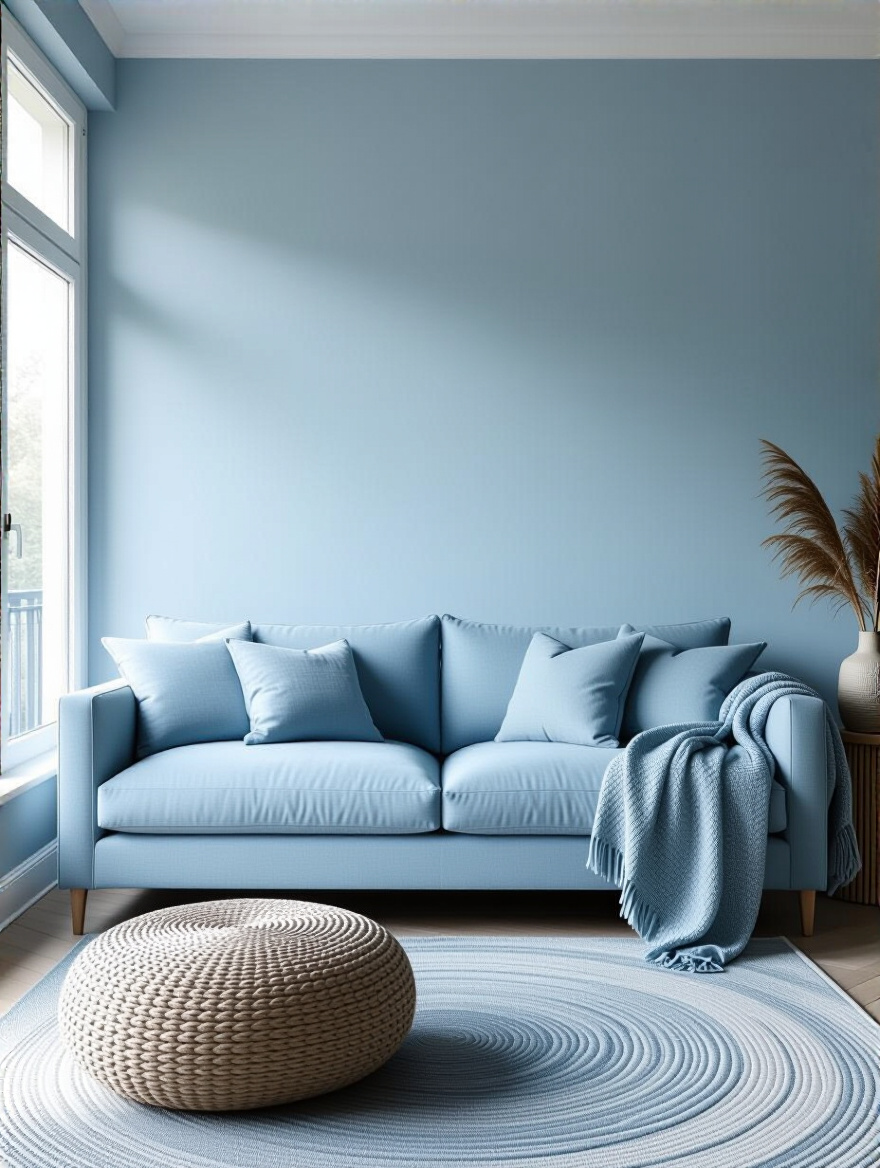
The result is a space that feels incredibly serene, sophisticated, and unified. I designed a tiny studio apartment for a client entirely in shades of gray—from a very light gray on the walls to a charcoal velvet sofa, a nubby wool rug in a medium gray, and touches of chrome. By avoiding big splashes of other colors, we made the tiny room feel cohesive and calming, rather than choppy and small. The key to keeping it from feeling flat is to use lots of different textures—linen, velvet, wool, metal—to add depth and interest.
With everything feeling open and calm, the final step is to make sure it stays that way.
Streamlined Storage & Decluttering: Keeping It Compact & Orderly
Let’s be real: no matter how perfectly you place your furniture or how beautiful your paint color is, a cluttered room will always feel small and stressful. The final piece of the puzzle is having smart, easy-to-use storage so that everything has a home.
16. Implement Built-In Storage Solutions for Seamless Integration
If you have the option, built-in storage is the absolute holy grail for small spaces. Think of bookshelves built around a doorway, a window seat with a lift-up top for storage, or a media unit that stretches from wall to wall. Because built-ins are integrated into the architecture of the room, they don’t feel like bulky furniture that’s been added in. They just feel like part of the space.
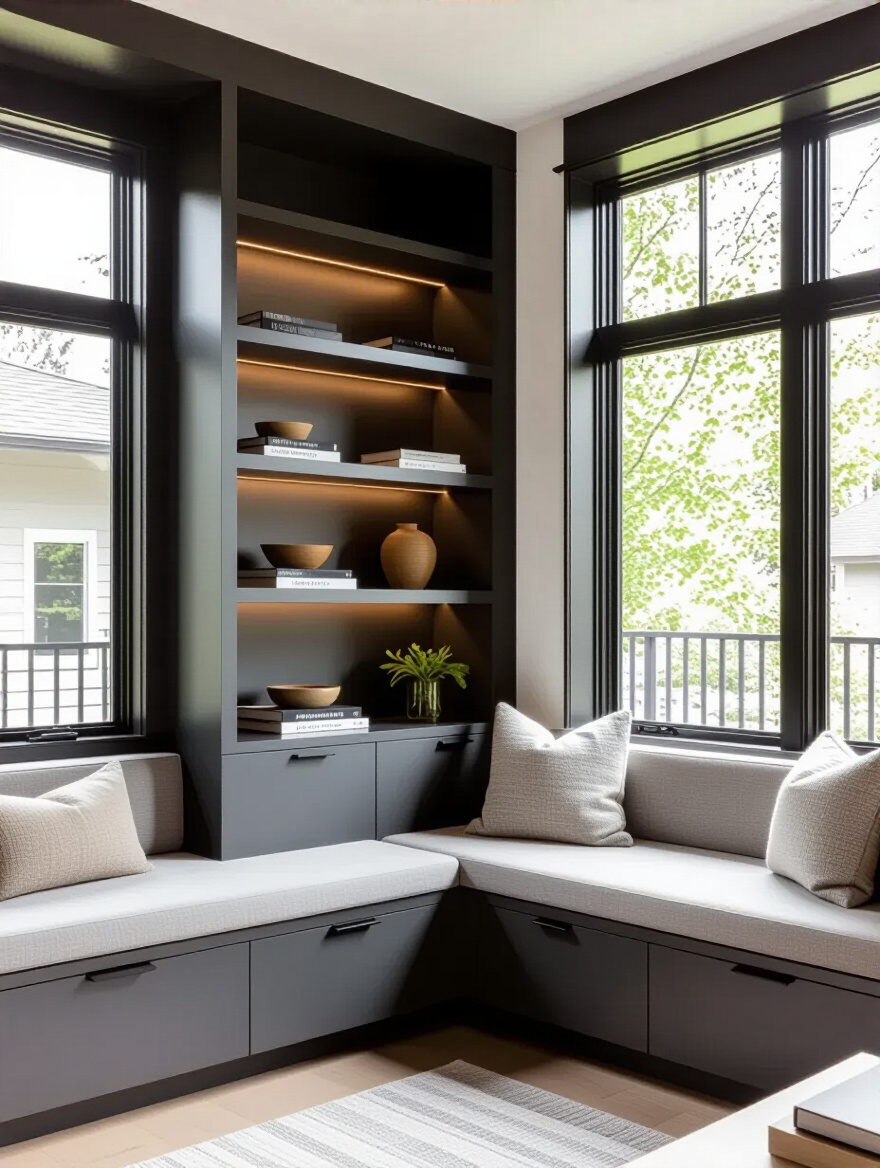
This is your chance to use every awkward nook and cranny. I love designing built-ins that go all the way to the ceiling to really maximize that vertical space. And if you paint them the same color as the walls, they practically disappear, creating a clean, seamless look that feels incredibly spacious while hiding a multitude of sins—from electronics to kids’ toys to stacks of magazines.
If built-ins aren’t in the budget, you can still be clever about where you stash your stuff.
17. Harness Under-Furniture Storage to Conquer Clutter Discreetly
Remember that legged furniture we talked about? The space underneath is prime real estate! This isn’t the place for random junk, but with the right containers, it can be an incredibly useful hidden storage spot. Think low-profile bins on wheels that slide easily under the sofa, holding things you don’t need every day, like Seasonal Decor or extra blankets.
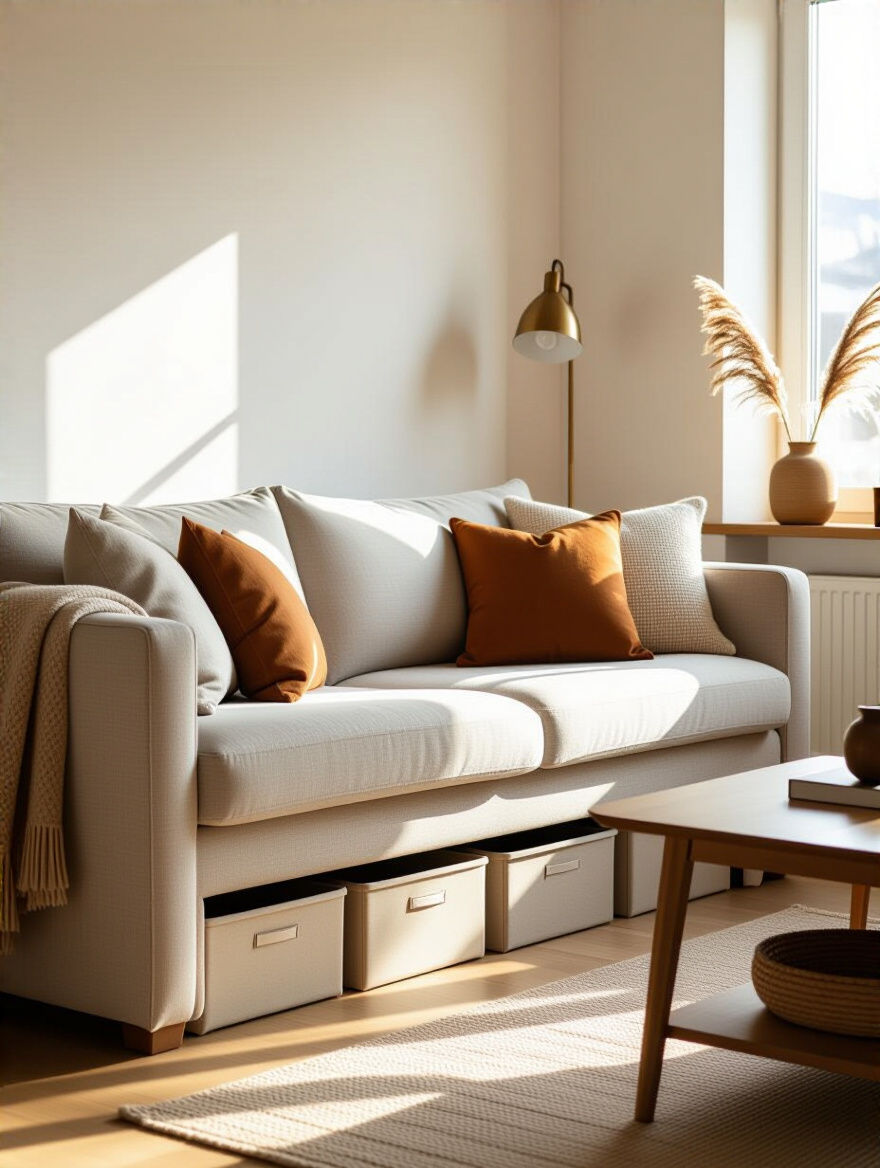
Look for attractive, lidded baskets or boxes that can tuck neatly under a console table to hold things like laptop chargers or mail. This gets the clutter off your surfaces and out of sight, which is key to making a space feel calm and organized. In my own family room, we have a few beautiful Woven baskets under a bench that secretly hold all of our video game controllers. It’s a lifesaver.
And as we’ve said before, don’t forget to look up!
18. Go Vertical with Wall Shelving for Accessible Display and Storage
Getting things up off the floor and onto the walls is a game-changer. Floating shelves are brilliant because they provide storage and display space with a very minimal visual footprint. A series of shelves installed high up on a wall can be the perfect home for books you love, without needing a bulky bookcase that eats up floor space.
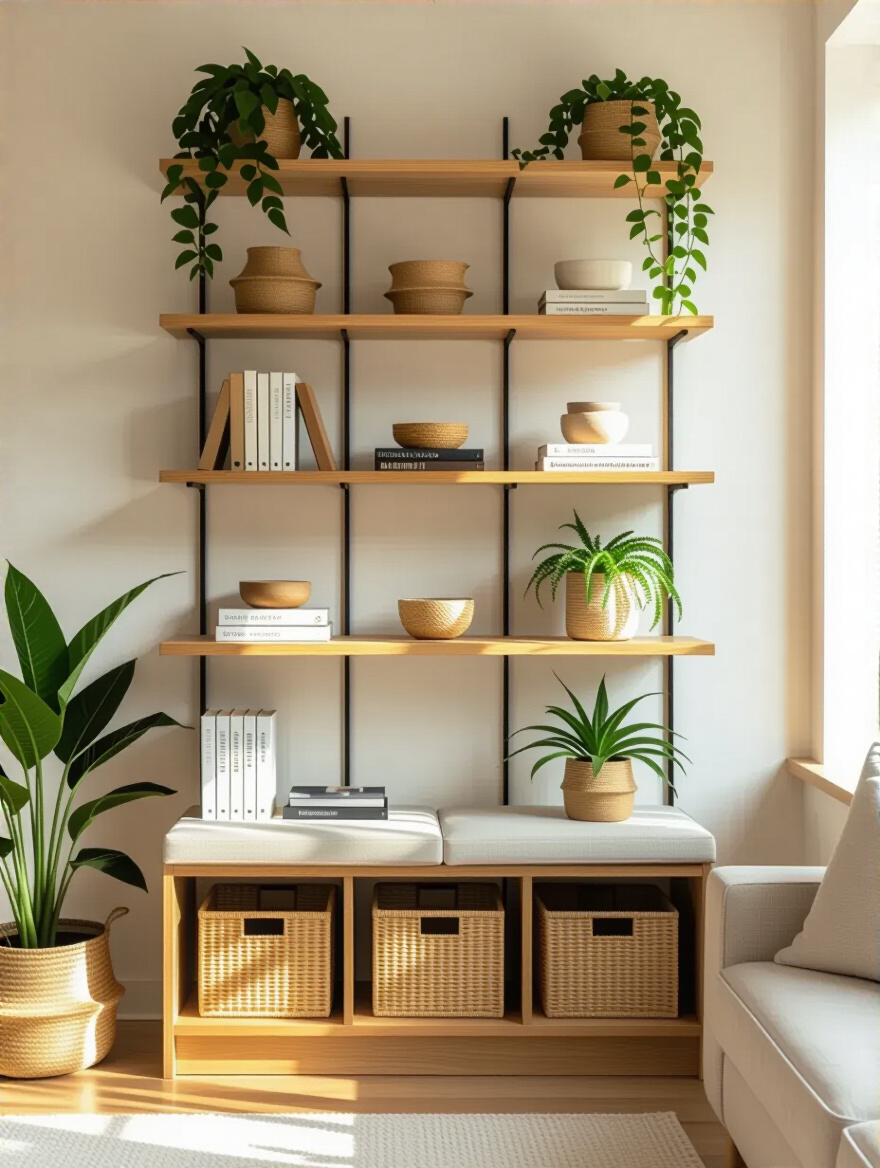
The trick is to style them thoughtfully. Don’t cram them full. Leave some “negative space” to let the items breathe. A mix of books (some standing, some stacked), a small plant, and a favorite object or two will look curated and beautiful. This strategy not only frees up the floor but also draws the eye upward, which, as we know, makes the whole room feel taller and more open.
Finally, let’s add those last little touches that make the room feel like you.
Strategic Accents: Curating Style Without Overwhelming the Space
Accessorizing a small room is like putting on jewelry. The right pieces can elevate the whole look, but too much is just… too much. This is about making thoughtful, intentional choices that show off your personality without creating visual chaos.
19. Choose Large, Singular Artwork to Make a Bold Statement
It seems counter-intuitive, but one large piece of art is almost always better in a small room than a gallery wall of many small pieces. A jumble of little frames can look cluttered and “busy,” making the wall feel chaotic. One big, impactful piece, on the other hand, acts as a confident focal point. It draws the eye, anchors the space, and gives the room a sense of grandeur and purpose.

Think of it as giving your room one amazing, statement necklace instead of ten little chains. Find a piece you truly love and let it be the star. Hang it over your sofa or on the largest blank wall. This single bold move will make your space feel more intentional and far more sophisticated than a wall full of clutter.
The same ‘less is more’ idea applies to your other decor pieces.
20. Select Transparent or See-Through Accents for Unobstructed Views
This is another one of those magic tricks I love. Furniture and decor made from transparent materials like acrylic or glass are your best friends in a small room. A “ghost” coffee table, for example, does its job perfectly without adding any visual weight to the room. You can see right through it to the rug and floor beyond, so it doesn’t interrupt the flow of the space.

I especially love using acrylic or glass for pieces that sit in the middle of the room, like coffee tables or console tables. It gives you the function you need while maintaining that open, airy feeling we’re working so hard to create. These pieces are modern, chic, and incredibly practical for keeping a space from feeling weighed down by too much solid stuff.
Now, let’s pull it all together with your personal touch.
21. Infuse Personal Style with Coordinated, Minimal Accessories
The final step is to bring your personality into the room, but with a firm, curatorial hand. The rule is simple: choose a few things you absolutely love, rather than a lot of things you just kind of like. It’s better to have one gorgeous, sculptural vase on your bookshelf and a super soft, chunky knit throw on your sofa than a dozen little knick-knacks that just collect dust.

Think in threes and fives, and group items together. A stack of a few beautiful books, a small plant, and one interesting object on your coffee table tray is a perfect little collection. Stick to the color palette you established earlier for your pillows and throws. This coordination creates a sense of calm and intention. Your home should tell your family’s story, but in a small space, you need to be a great editor.
Conclusion
See? It’s not about having less; it’s about being smarter with what you have. Creating a living room that feels spacious, inviting, and full of warmth is completely within your reach, no matter the square footage. It’s about making intentional choices—from the ground up—that help your space live up to its full potential. By using these tricks of the trade, you can craft a room that not only looks bigger but feels better. It becomes a true retreat, the heart of your home where your family can relax, connect, and make memories.
So, go ahead. Take one of these ideas and try it this weekend. Float your sofa off the wall, swap out your heavy drapes, or declutter that bookshelf. You’ll be amazed at the difference one small change can make. Your cozy, comfortable, and beautiful living room is waiting for you.






